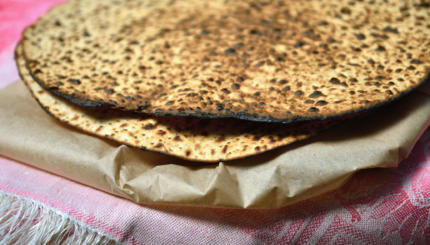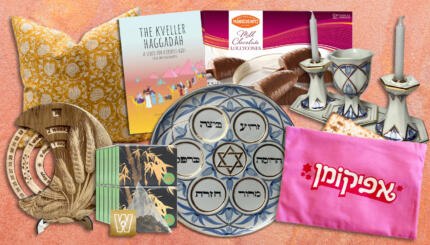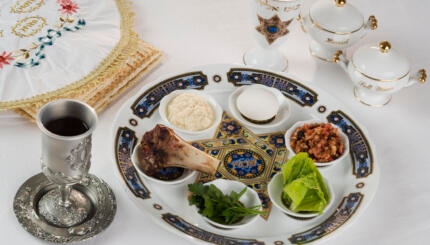When my family sits down to the table, we won’t be passing around the Maxwell House Hagaddahs. We don’t use the Sacks one, anything by Artscroll, or even something from JPS. We will be using “Our Family Haggadah.”
The brainchild of my mother and in the mid-90’s, this DIY publication has been a work in progress that is currently in its fifth edition. While the first versions most likely contained dozens of copyright infringements, the current version is getting closer to an original family document.
We realized that the people around the table wanted something traditionally authentic, intellectually challenging, and unique to our family. As you can see, we have cut many portions of the traditional hagaddah, but have done our best to maintain the essential pieces while creating more opportunities for discussion and questions. Without the pressure to get through
so much text
, we have the comfort and opportunity to truly be open to any questions that might arise.
If you don’t want to use our haggadah, and don’t have the time to make your own, consider cutting out a few sections and replacing them with open discussion or guided Q&A. You will be surprised to see people refreshed by the change and the chance to make the seder experience more personal.
Seder Table Activities
The other way we’ve adapted our seder is by adding in new activities and games each year. We realized that there is often down-time during the meal (shulchan orech): as soup is being served, between courses, and during dessert. So we play games! We’ve tried a number of different activities over the years including our own versions of Cranium, Mad Gabs and most importantly Jewpardy. It’s not so simple to create your own games, so use the ones other people have already made. Pick a game, print it out, and you’re good to go!
An Activity for Every Family
This last suggestion is more than a game – it’s an interactive reimagining of a 2,000+ year old tradition. Anyone can run this activity at their seder:
Whatever the true origin of the orange on the seder plate, the idea of placing symbolic items on the seder table feels as old as Passover itself. But in addition to the six symbols on the seder plate, the orange, and Cup of Miriam, we can add our own symbols.
Before the seder, send out a casting call to your participants asking them to bring their own Passover symbol to place on the table. They can bring anything they want, but must be ready to explain how it is symbolic of a Passover theme or concept. Before the seder begins, place each of the symbols on the table. As the seder progresses, take periodic breaks to allow the table to discuss one of the objects. Solicit suggestions from the group as to what the item might symbolize and then ask the person who brought it to explain what it means to them.
At the end of the seder, or once all of the symbols have been presented, vote on which item added the most to the seder experience. The winner gets a reserved space at the table next year!
I wish you the best of luck with a meaningful Passover seder. If you’re looking for divrei torah and other content for your seder, visit http://www.jofa.org/Education/Holidays/Holidays for some great articles and resources.
Like this post? Join the conversation through MyJewishLearning’s weekly blogs newsletter.



